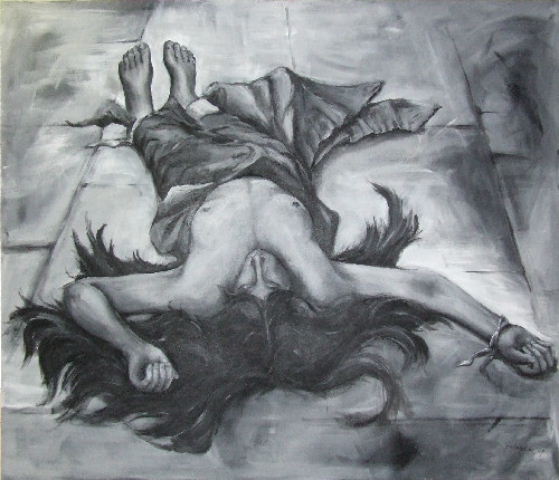Page 7 of 8
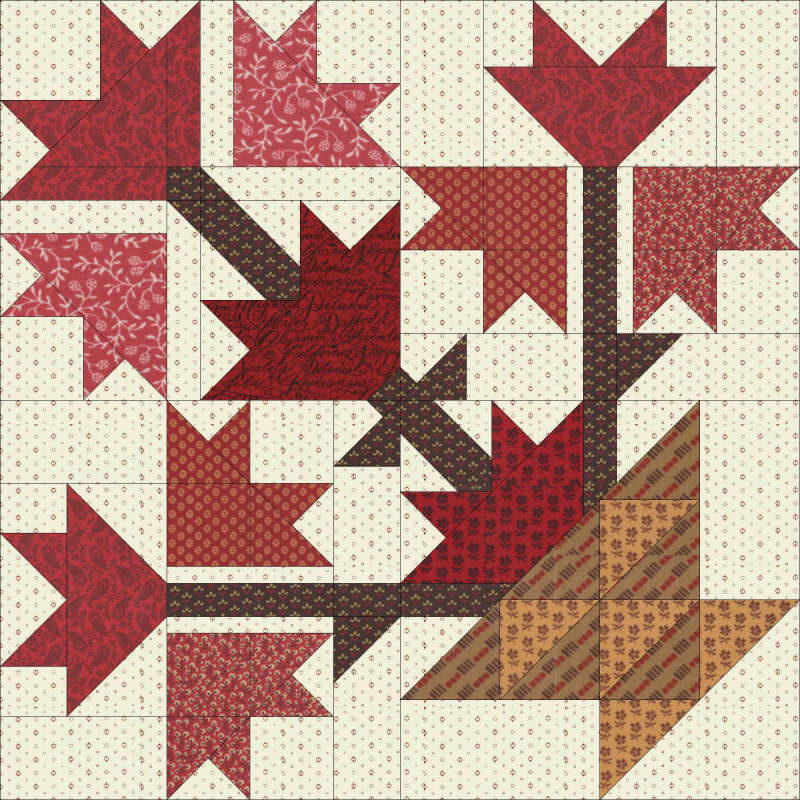 The last corner block contains several long, thin strips. It consists of quite a few components, making it a difficult block. I will assemble this block using paper piecing. Fortunately, EQ7 can easily create a paper piecing pattern. The last corner block contains several long, thin strips. It consists of quite a few components, making it a difficult block. I will assemble this block using paper piecing. Fortunately, EQ7 can easily create a paper piecing pattern. |
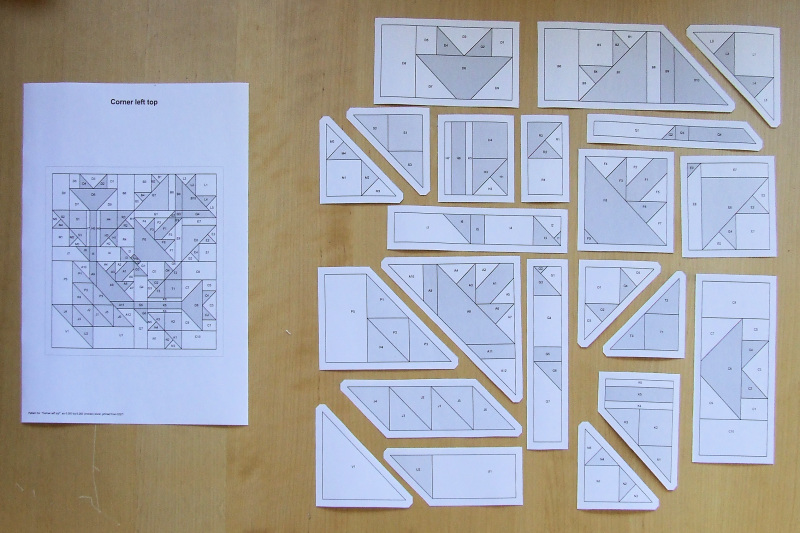 I won't trace the pattern onto tea bag paper or similar, but will sew directly on the printer paper. That works fine. First, I cut out the components and lay them out in the pattern. This way, I can better see where each piece should go. By the way, the pattern is printed in reverse, but that doesn't matter in this case. I won't trace the pattern onto tea bag paper or similar, but will sew directly on the printer paper. That works fine. First, I cut out the components and lay them out in the pattern. This way, I can better see where each piece should go. By the way, the pattern is printed in reverse, but that doesn't matter in this case. |
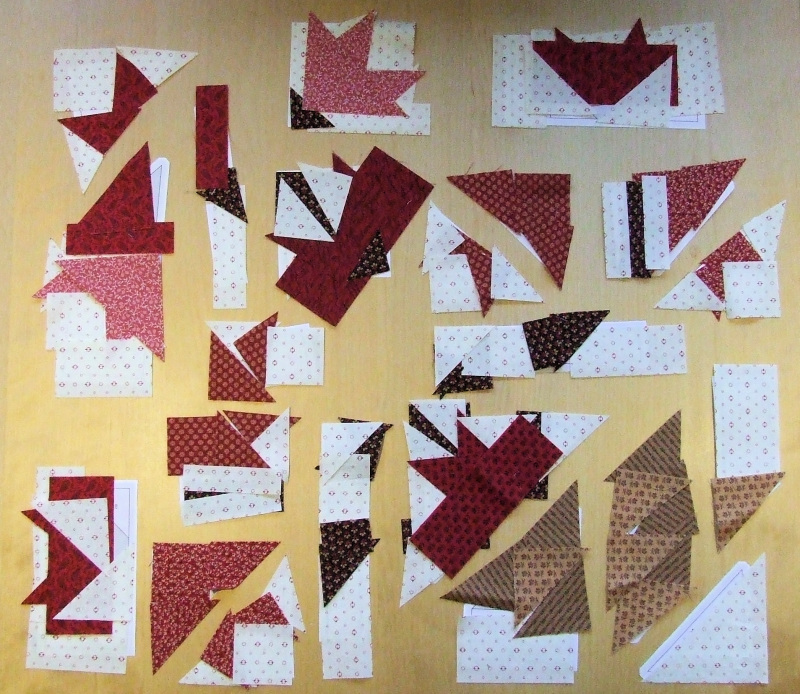 Cutting the pieces takes some work. When you see them laid out like this, it seems like the block will never come together. I'll just start somewhere. Cutting the pieces takes some work. When you see them laid out like this, it seems like the block will never come together. I'll just start somewhere. |
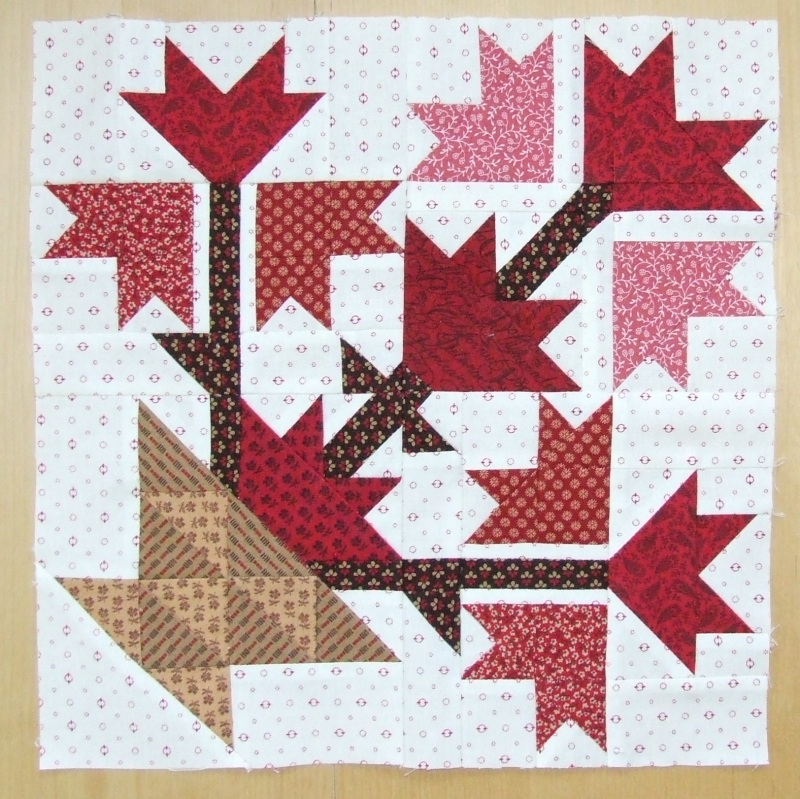 It takes a day of puzzling, frequent use of the seam ripper, and some grumbling. But then it's done—the last and most difficult corner. All the special blocks are now finished, and I'm completely caught up with the small blocks. I've also made a birthday block (twice), the January 1 bonus block, the January 2 alternative, and the Valentine's block. In total, 73 out of the 365 blocks are now done. It's starting to come together. The outer dark border contains 12 six-inch blocks. These are the blocks I will make now. It’s possible that other patterns will be chosen than those currently in the design, but that doesn’t bother me too much. It takes a day of puzzling, frequent use of the seam ripper, and some grumbling. But then it's done—the last and most difficult corner. All the special blocks are now finished, and I'm completely caught up with the small blocks. I've also made a birthday block (twice), the January 1 bonus block, the January 2 alternative, and the Valentine's block. In total, 73 out of the 365 blocks are now done. It's starting to come together. The outer dark border contains 12 six-inch blocks. These are the blocks I will make now. It’s possible that other patterns will be chosen than those currently in the design, but that doesn’t bother me too much. |
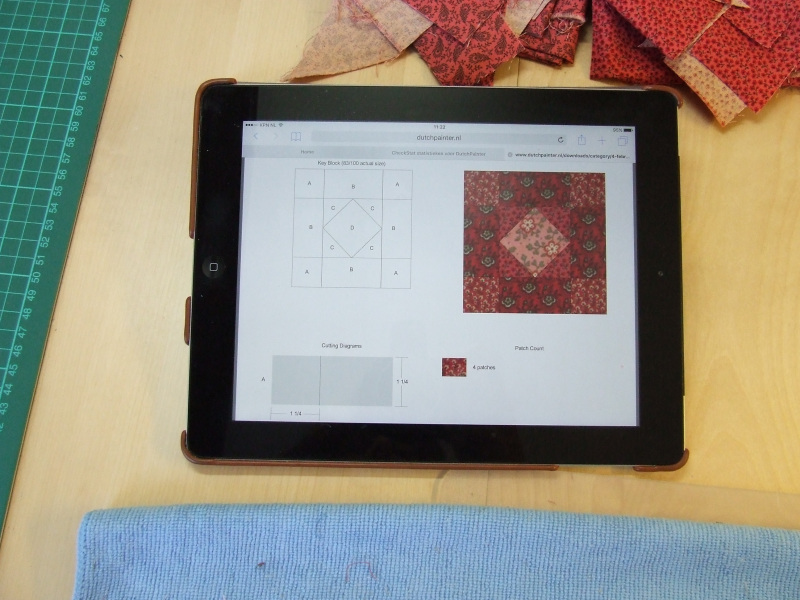 When making complex blocks, it’s useful to have an example on hand. I use EQ7, and instead of printing the cutting instructions and such, I make a PDF. I can then open the PDF on a tablet. The tablet is nice and small, and I can quickly grab it or set it aside. This way, I avoid many paper examples that I only use once. It's cheaper and also better for the environment. All the published blocks of the 365 Challenge can be found here as PDFs. When making complex blocks, it’s useful to have an example on hand. I use EQ7, and instead of printing the cutting instructions and such, I make a PDF. I can then open the PDF on a tablet. The tablet is nice and small, and I can quickly grab it or set it aside. This way, I avoid many paper examples that I only use once. It's cheaper and also better for the environment. All the published blocks of the 365 Challenge can be found here as PDFs. |
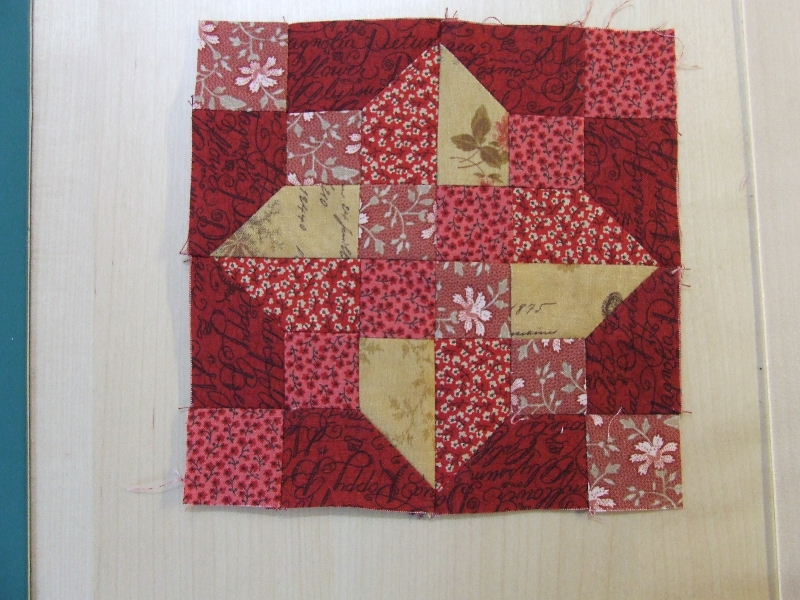 I started with the 12 dark six-inch blocks. These are a bit less finicky and fun to do. I encountered something I hadn't seen with the small dark three-inch blocks—a set-in corner. It seems difficult but is probably manageable. I started with the 12 dark six-inch blocks. These are a bit less finicky and fun to do. I encountered something I hadn't seen with the small dark three-inch blocks—a set-in corner. It seems difficult but is probably manageable. |
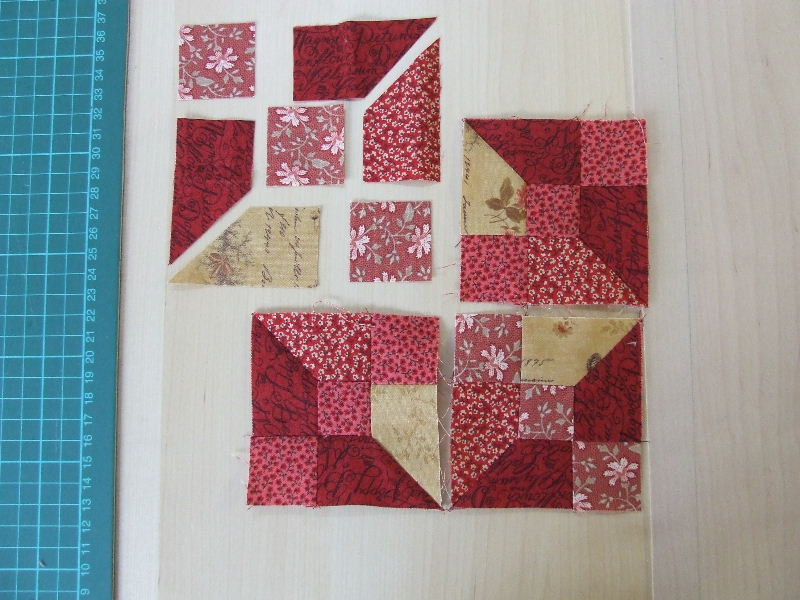 Often, you can divide blocks into small parts. This block is one of them. It immediately looks less complex. If you still find a set-in corner difficult or have never done one, you can read in the article inset corner quilt block about it. Maybe it will help you. Often, you can divide blocks into small parts. This block is one of them. It immediately looks less complex. If you still find a set-in corner difficult or have never done one, you can read in the article inset corner quilt block about it. Maybe it will help you. |
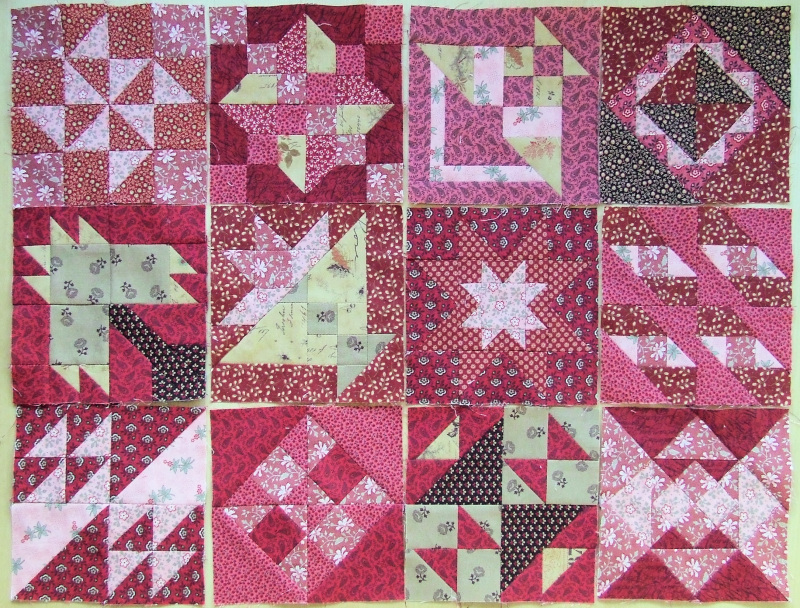 The dark six-inch blocks are done. There are some tricky pieces here and there, but generally, they are manageable. The blocks are coming along nicely. All the separate blocks are done. The only blocks left to make are the three-inch dark blocks and six-inch light blocks. It looks nice with all the blocks together. The dark six-inch blocks are done. There are some tricky pieces here and there, but generally, they are manageable. The blocks are coming along nicely. All the separate blocks are done. The only blocks left to make are the three-inch dark blocks and six-inch light blocks. It looks nice with all the blocks together. |
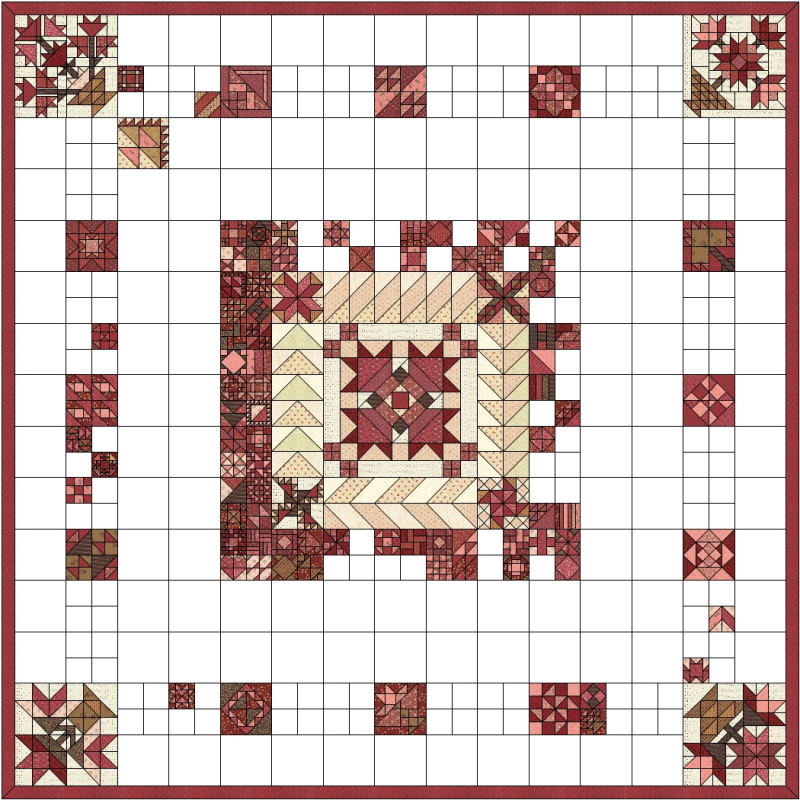 I now have 103 blocks done. I'm curious how it will look when assembled. With EQ7, I can create an image of the quilt. You can see it's starting to come together. I now have 103 blocks done. I'm curious how it will look when assembled. With EQ7, I can create an image of the quilt. You can see it's starting to come together. |
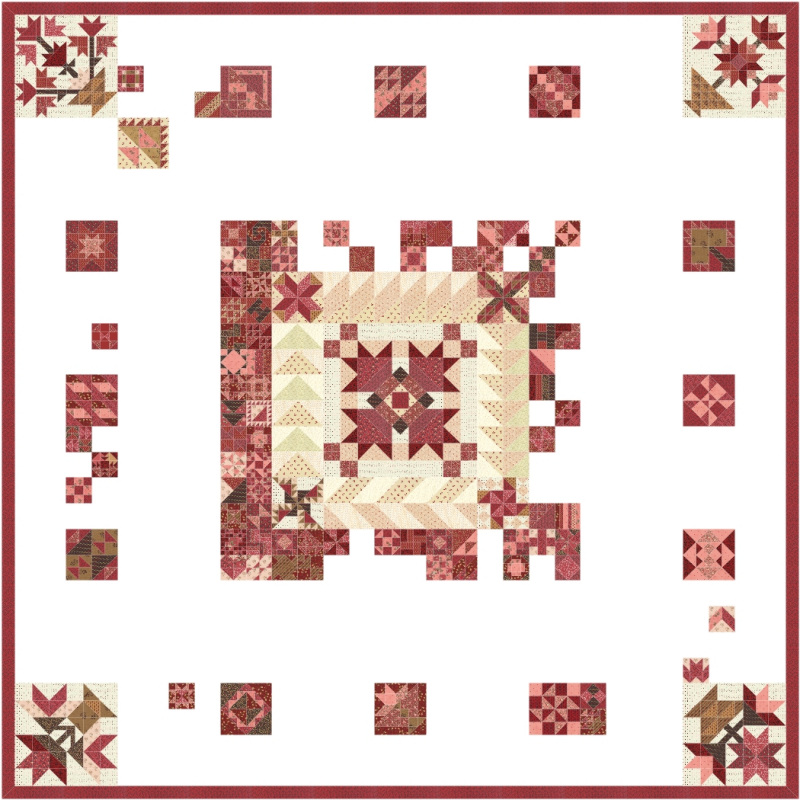 Some of the blocks are not in the original design. I still don't know how exactly I will arrange the blocks, so I just placed them somewhere. It's more about the idea. Some of the blocks are not in the original design. I still don't know how exactly I will arrange the blocks, so I just placed them somewhere. It's more about the idea. |



